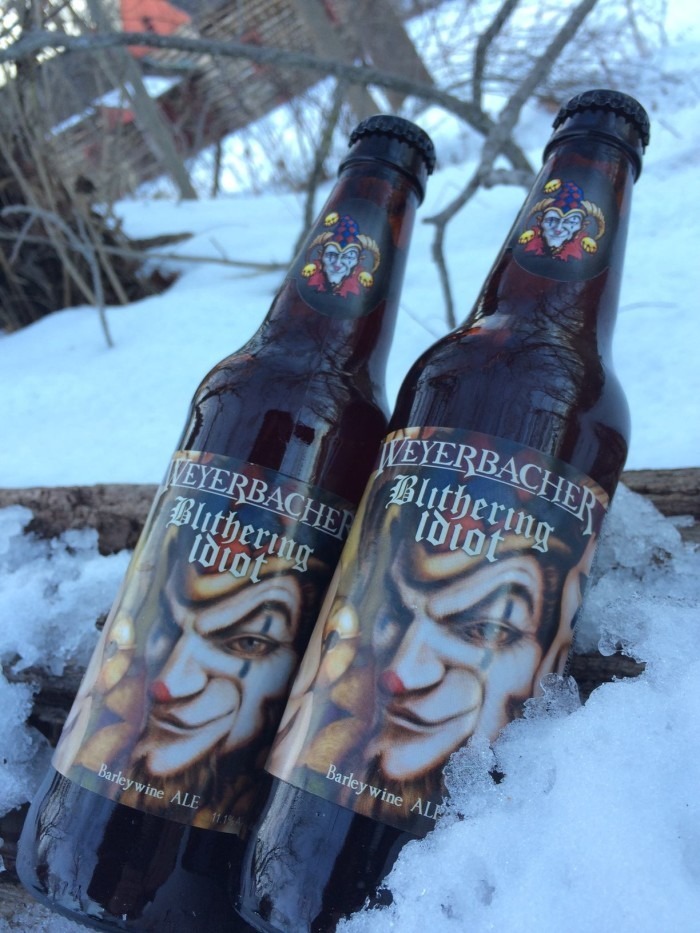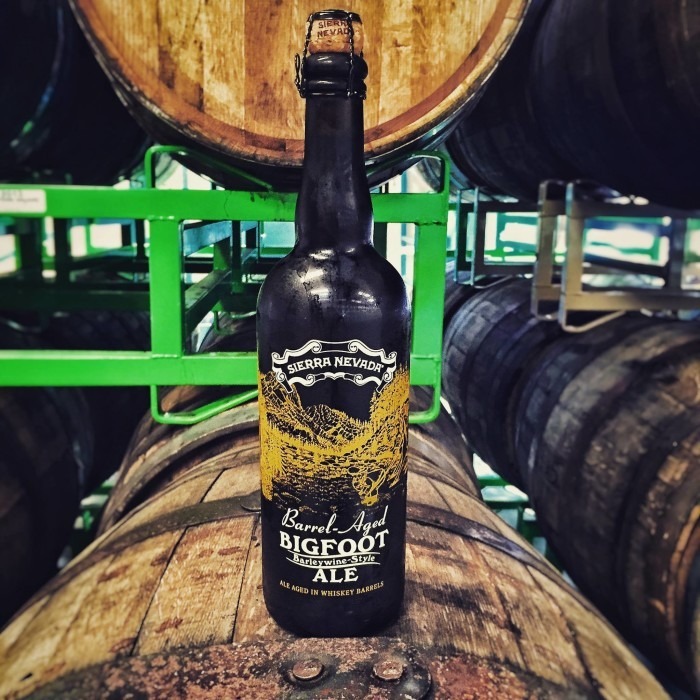Get To Know Barleywine, The Strongest Style Of Beer
We may receive a commission on purchases made from links.
It checks pretty much every box that makes styles such as the India pale ale and its souped-up cousin, the double IPA, phenomenally popular. It's strong alcohol-wise. It's extremely flavorful. It's open to interpretation from brewers. Yet barleywine hasn't had its cultish moment in America, the sort that the vegetal-smelling, salty-tasting gose improbably now enjoys.
Perhaps barleywine's lack of ready availability is holding it back. Or maybe it comes on a little too strong and too rich. The style's signature is essentially its meal-in-a-glass-ness: It's a thick, bracing brew likely to lay its drinker languid with the first glass.
The style sprang from British brewers labeling their strongest ales "barleywines," an unmistakable etymological nod to their vinous alcohol levels (in all cases at least 8 percent by volume). Such a style never stood a commercial chance in an America where paler-colored, lighter-tasting lagers of no more than 5 percent alcohol by volume have reigned sales-wise since the late 19th century.
Still, modern American-made barleywines have been around since 1975, when the Anchor Brewing Co., the nation's oldest craft brewery, introduced its Old Foghorn barleywine. During the 40 years since then — an entire generation and then some — other small-batch, independent breweries have followed, including big names such as Sierra Nevada.
No matter: Barleywine remains the domain of the aficionado who wants to geek out to complex, luxuriant ales that warm the palate (and belly) and ease the mind (quickly). Below are six barleywines you should try as well.
A couple of quick notes: Most of these were difficult to find, even in our beer-friendly environs of Greater Boston. Barleywines, especially American-crafted ones, are that scarce, unfortunately. And due to a regulatory quirk, most of the ones you will encounter are called "barleywine-style" ales. The feds couldn't wrap their heads around the "wine" bit for a beer.
Serving suggestion: Definitely in a bulbous snifter and near room temperature; these are for the coolest winter evenings and for when you most definitely don't have anything else to do that night.

Weyerbacher Blithering Idiot
Weyerbacher Brewing Co., Easton, Pennsylvania
All spicy, thick malt up front and ever afterward, this barleywine ends with notes of toffee and caramel. As expected, it's impossibly rich and unapologetically strong: 11.1 percent ABV. A great introduction to the style.
Hog Heaven
Avery Brewing Co., Boulder, Colorado
This offering is exactly the sort of experimentation that American brewers could be doing with barleywines. Avery dry-hops a traditional version of the style (that is to say, the brewery adds aroma hops late in the brewing process), giving it a spicy, crackling bitterness all the way through, on top of an almost caramel-candy mouthfeel and taste. "Only" 9.2 percent ABV — practically sessionable in this category!
Old Howling Bastard
Blue Point Brewing Co., Patchogue, New York
Because of its strength and richness, barleywine is one of the very few beer styles that could actually do with some aging (most beers should be consumed as fresh as possible, near their release dates from the brewery). This bottle dated from 2009, well before hegemonic Anheuser-Busch InBev snapped up Long Island's Blue Point in 2014. The half-dozen years of conditioning produced a barleywine that much denser and heavier-tasting. Just over 10 percent ABV.

Bigfoot
Sierra Nevada Brewing Co., Chico, California
One of the nation's oldest and biggest craft breweries releases perhaps the most popular domestically made barleywine every autumn. To us, it seems to vary ever so slightly in taste from year to year. This bottle from 2014 had a kind of burnt-brown-sugar aroma and a lot of hoppy spiciness on the front and finish — definitely an American spin on the style and bravo for that. It's around 9.5 percent ABV.
Old Foghorn
Anchor Brewing Co., San Francisco, California
In 1978, two years before the official launch of his Sierra Nevada Brewing Co., Ken Grossman toured the then-tiny Anchor Brewing Co. His guide? Fritz Maytag, Anchor's owner. At the end of the tour, Grossman, who still runs Sierra Nevada, bought cases of Old Foghorn, the first domestically produced barleywine since Prohibition. He had never tasted anything like it before. Indeed, this is the granddaddy of the style Stateside — or, really, outside of Europe. Complex and deep, with a touch of hoppiness on the finish, Old Foghorn clocks in at around 9 percent ABV.
Copper Snow
Xbeeriment, Copenhagen, Denmark
We normally only review American-made beers because 'Murica. As we noted, however, barleywines can be difficult to find, so for our sixth selection we dipped into Northern Europe...and found what we thought was the best of the lot. Copper Snow is from a brewing company that two homebrewers started in the Danish capital, and it leads with a candy-like chocolate-caramel taste and ends impossibly smooth, even at 10 percent ABV.
Tom Acitelli is the author of The Audacity of Hops: The History of America's Craft Beer Revolution, and the new fine-wine history, American Wine: A Coming-of-Age Story.

